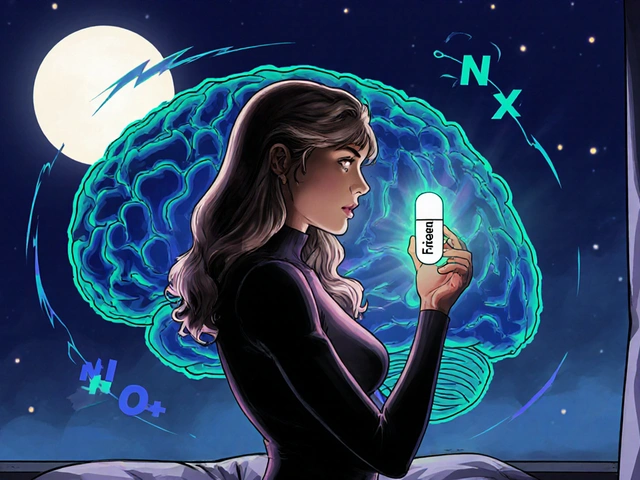Lisinopril Angioedema: Quick Guide
Did you know a common blood‑pressure pill can cause your face, lips or throat to swell up suddenly? That’s called angioedema, and it can happen with lisinopril, an ACE‑inhibitor many people take for hypertension. It’s rare, but when it occurs it feels scary and needs a fast response. Below you’ll find the basics, the warning signs, and what to do if it shows up.
Spotting the Signs
Angioedema feels like a deep, tight swelling that doesn’t itch like a rash. Look for puffiness around the eyes, cheeks, lips, tongue, or throat. The skin may look smooth and shiny. It can appear within hours of the first dose or after weeks of steady use. Some folks notice a tingling or a sense that the swelling is getting bigger. If the swelling makes it hard to swallow, speak, or breathe, treat it as an emergency.
Not everyone gets a rash or hives first. In fact, many people with lisinopril‑related angioedema never develop a typical allergic rash. That’s why it’s easy to miss if you’re not watching for the specific swelling pattern. The swelling usually doesn’t go away on its own quickly; it can linger for a day or more if you keep taking the drug.
What to Do If It Happens
If you notice any of the signs, stop the lisinopril right away. Call your doctor or go to urgent care. If you have trouble breathing, call 911 immediately – airway swelling can become life‑threatening fast. While waiting for help, try to stay calm and keep your head upright; lying flat can make breathing harder.
Your doctor may prescribe antihistamines or a short course of steroids, but the most important step is to discontinue the ACE‑inhibitor. They’ll likely switch you to a different class of blood‑pressure medicine, such as an ARB (angiotensin II receptor blocker), which has a much lower risk of causing angioedema.
After an episode, your doctor might suggest a few follow‑up checks. Blood pressure should still be monitored, and you’ll want to know if you’re at higher risk for future swelling with other ACE inhibitors. Keeping a list of all meds you’ve taken and any reactions helps your healthcare team avoid similar problems.
For people who have never had angioedema, the risk with lisinopril is under 1 %. Factors that raise the odds include a family history of angioedema, being of African descent, or having had a previous ACE‑inhibitor reaction. If you fall into any of these groups, discuss the risk with your doctor before starting lisinopril.
Bottom line: watch the face, lips, tongue, and throat for sudden, painless swelling. Stop the pill, seek medical help, and switch to a safer blood‑pressure option if needed. Knowing these steps can keep you safe while you manage high blood pressure.
Got more questions? Write them down and bring them to your next appointment. A quick chat with your provider can clear up doubts and set up a plan that works for you without the worry of angioedema.

Allergic Reaction to Lisinopril‑HCTZ: What to Do Now and Stay Safe
Worried about a reaction to Lisinopril‑HCTZ? Learn urgent steps, what counts as an emergency, how to prevent it again, and what to ask your doctor next.




